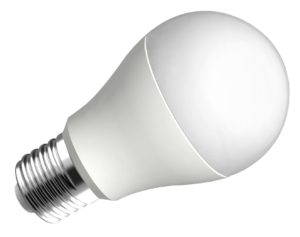 Being kind to the earth we live on is a goal for many people. However, the truth is that almost none of us want to sacrifice our lifestyles to be environmentally better. Luckily, these ideas aren’t mutually exclusive. There are a variety of ways that you can reduce your carbon footprint without leaving a plentiful life behind you.
Being kind to the earth we live on is a goal for many people. However, the truth is that almost none of us want to sacrifice our lifestyles to be environmentally better. Luckily, these ideas aren’t mutually exclusive. There are a variety of ways that you can reduce your carbon footprint without leaving a plentiful life behind you.
Change the Temperature in Your Home
You don’t have to make any intense temperature changes in your home but little changes go a long way. Turning the heat up a few degrees when it’s hot out or a few degrees down when it’s cold out can make a difference in how green you are and how much you save on your electric bill!
If you want to take an extra step, you can install a programmable thermostat. This way, you can set your central heating and cooling system to work less when you’re at work, for example.
Switch Out Your Bulbs
The use of incandescent lightbulbs burns more energy than necessary. If you can switch these out with LED or CFL bulbs, you can save energy with pretty much no effort! Some people are worried that these bulbs cost a little more up front but they last longer, so it’s a better investment in the long run.
Wash Clothes in Cold Water
When you wash your clothes, it takes energy to heat the water up. Washing your clothes in cold water is a great way to be a little more green. This is also a great idea because its a great way to keep the colors of your clothes as they were when you bought them for longer.
Turn Off and Unplug
It’s very easy to leave a room and keep the coffee maker you aren’t using plugged in or leave the light on. It’s just as easy, though, to take a second to unplug and turn off lights and appliances that aren’t in use.
Smart power strips can help you if you’re a little forgetful because they will limit the power that runs to appliances that are turned off.
Use Reusable Water Bottles
Think about how many plastic bottles or disposable coffee cups you use in a day. Now, think about how easy it would be – and inexpensive! – to switch out those for a single reusable water bottle. Even if you’re a coffee drinker, a reusable thermos can go a long way. Not to mention, if you bring your own drinks to work, you are less likely to be tempted into the coffeehouse across the street, saving you money.
Recycle, Recycle, Recycle!
It seems like an obvious choice to recycle and it is! A lot of the waste you use every day can be recycled rather than sent to a landfill. Empty soda cans, paper towel rolls, and extra papers can all be disposed of in a greener way.
What you might be surprised about, though, is that you should recycle your electronics too. This might take a little extra effort because you’ll have to take them to an electronics recycling center or event but it isn’t anything that will ruin your day. When you just throw your phone or other electronics away, you are putting toxins such as mercury out into the Earth.
Compost
If you can’t recycle it, consider creating a compost bin in your backyard. These are easy to set up and can even be used to help your garden. Just like you might use a weed eater that you read about at http://thetoolsy.com/best-weed-eaters-reviews to remove dangerous plants from your garden, you can use composted materials to help fertilize it.
There are a variety of everyday items that you can compost. Coffee grounds and filters after your morning brew, non-lactose milks (i.e. almond, soy, or coconut milk) that have spoiled, and even used paper towels can all go into the compost bin.
Switch Up Your Shower Habits
The average shower can use up to 2.5 gallons of water a minute! Even worse, filling even a small bathtub takes about 40 gallons of water! So, what can you do?
The most obvious answer is to take showers instead of baths most of the time. When you take a shower, try to keep the time you spend in the shower to 10 minutes or less to conserve water.
For those who don’t mind making a small investment, a low-flow showerhead can reduce the water you use without sacrificing water pressure. Just like the LED and CFL light bulbs, this reduction of water use can help out when it comes time to pay bills.

Hi there, I’m Woodworking Pete Alman. I’m a former carpenter turned writer, and proud resident of Nashville, Tennessee. When not working on a project in my shed, I’m lifting weights or hanging out with my three dogs (Dobermans).







You must log in to post a comment.